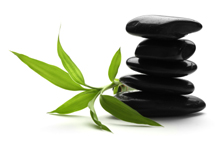At Tipping Point Acupuncture, we use a variety of techniques to benefit to you. These techniques can be used as stand-alone therapies, but are mainly used in concert with acupuncture. Based upon our tailored plan for you, we will choose the proper combination of techniques for each treatment session to achieve the most impact on your condition. Rest assured that before any of these techniques are used on you, you’ll learn more about them, be screened for any complicating factors that might prevent safe use of that technique on you, and be coached on followup self-care.
Electrical Stimulation Electrical stimulation, nicknamed e-stim, is the combination of needles and a small electrical current to mimic traditional needle manipulation techniques. If needed, after needles are inserted to the proper depth, the e-stim machine is attached to the needles in the proper configuration and a gentle, barely-perceptible current is applied until the patient feels a “tapping” sensation. It is commonly used in areas to relieve pain, such as the low back, hip, shoulder, knee or other joints.
Cupping Cupping is the use of a slight vacuum created inside of a sealed cup that is placed on the surface of the skin. The vacuum force draws tissue into the cup, helping to move stagnated energy at a particular acupoint or group of points, thereby relieving pain and increasing circulation. Cupping, also known as “negative pressure massage,” is commonly used to relieve muscular tension. Some patients liken the sensation of cupping to deep muscle massage; one patient described it as “a warm hug.”
Bodywork Bodywork can be used in concert with needles, where needles are unwarranted, where a different type of stimulation is needed, or as patient “self-care” where patients are taught self-application to help ease recurrent conditions.
Guasha Guasha (pronounced “gwa sha”) is a technique used to effect stagnated Qi in the upper layers of muscle and skin. It is similar in effect to cupping in that it is a mechanical force applied to the skin surface, but guasha works at a more shallow level. To do guasha, a small amount of lubricant is applied to the skin surface and then the skin surface is rubbed with a guasha tool. This technique is typically used to break up stagnated energy of the upper back and neck associated with the onset of the common cold. Most people find this technique to be very comfortable like a massage.
Moxibustion Moxibustion is the combustion of herbs near an acupuncture point to thermally stimulate the point. The most common herb used is artemesia vulgaris, common mugwort. Moxa in cigar-shaped or a loose fluff form is burnt near an acupoint to generate heat and possibly smoke. The heat and smoke have the effect to warm the acupoint and invigorate the circulation of Qi and blood through an area. Moxibustion is commonly used for conditions that are worsened by cold. Great care is taken to ensure your safety during moxibustion. In cases where there is sensitivity to smoke or when a general warming of an area is needed, a heat lamp can be used instead of moxa.
Magnet Therapy Magnet therapy involves the application of small-force magnets to selected points for a longer period of time. This small stimulus can help to keep Qi from stagnating in an area thereby providing pain relief.
Ear acupuncture In TCM, the entire body can be projected onto the surface of the outer ear, thereby creating a system where theoretically all conditions can be treated via acupuncture applied to the ear. In addition to ear acupuncture, one way we use the ear is to apply small seeds to the external surface of the ear to stimulate a point or combination of points to provide longer-term stimulation to the point. We use this stimulus to provide extended pain relief and promote emotional tranquility.

